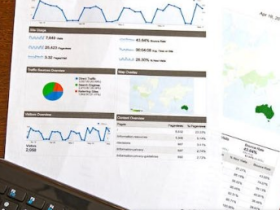QCT – Bone Mineral Densitometry available at: Auburn, Burwood, Campsie, Norwest, Rouse Hill & Strathfield DEXA – Available at: Campsie, Norwest & Pennant Hills
CT BMD / QCT / Quantitative Computed Tomography or QCT Densitometry are all names used to describe a method of measuring bone density. It is the most accurate method in evaluation of osteoporosis.
Overview
A CT BMD bone density measurement is used to assess osteoporosis in the same way a cholesterol measurement is used for coronary heart disease or blood pressure for stroke. The data is used to measure an important risk factor and determine the necessity, choice and effectiveness of the therapy. The principle underlying CT BMD is that normal calcified bone will absorb more X-Rays than surrounding tissue. The CT density measurement can be used to measure total bone mass within a sample of tissue.
Preparing for the Procedure
Please bring your referral (letter from your practitioner) and your Medicare and/or Pension Healthcare card with you to your appointment. It is important to bring all previous imaging relating to the region being scanned.
Please ensure that you are on time for your appointment so that there is sufficient time to perform the procedure.
You do not need to fast and you are able to drive home following your examination.
Please inform the radiographer if you are or you suspect you may be pregnant.
Scanning
The CT BMD examination is performed on our CT Scanner and takes approximately five minutes. An extremely low dose CT scan is performed of the upper lumbar vertebrae and the proximal femur.
Results
The images are evaluated for bone mineral density and any related or incidental findings (vertebral compressions, kidney stones etc.) are noted in the report. The average bone density of the patient is then:
- Graphically compared to age and sex-matched controls.
- Related to a fracture risk threshold below which most compression fractures occur.
- Categorised as to the prevalence of fractures in a similar age group and bone density.
Results may be provided electronically to your referrer.
Synergy Radiology strongly advises that you return to your practitioner, in order for your doctor to discuss your radiology report with you.
We understand that some patients are anxious about having tests performed. If you do have any questions or concerns, please do not hesitate to ask our staff.
FAQs
How is CT BMD / QCT different from other methods?
CT BMD and DEXA both measure bone density. Bone is a mixture of high-turnover trabecular (spongy) bone and slowly-changing cortical (compact) bone. CT BMD isolates the metabolically-active important trabecular bone for analysis.
Can I have a CT BMD while pregnant or trying to conceive?
CT scanners use X-Rays. As X-Rays can be harmful to a developing foetus, it is important to tell your doctor and our staff prior to the test, if you are or may be pregnant.
Can I have a CT BMD scan while breastfeeding?
You can continue to breastfeed as normal.
How long will the CT BMD scan take?
A CT BMD scan takes five minutes.
Can I eat and drive after a CT scan?
You have no restrictions after having a CT scan and can go about your normal activities.
Do I have to take my clothes off for my CT scan?
The radiographer may ask you to change into a gown if required.
Will the radiographer performing my scan, be able to tell me the results?
It is the radiographer’s duty to perform the test and ensure the images are clear for the radiologist (specialist) to interpret them.








Leave a Reply